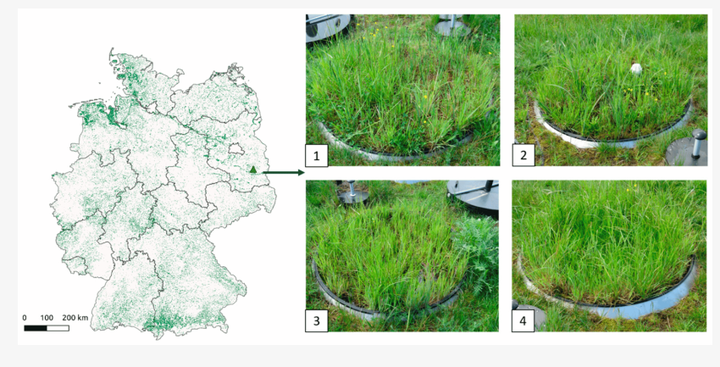[30] Challenges of including wet grasslands with variable groundwater tables in large-area crop production simulations

Abstract
Large-scale assessments of agricultural productivity necessitate integrated simulations of cropland and grassland ecosystems within their spatiotemporal context. However, simultaneous simulations face limitations due to assumptions of uniform species distribution. Grasslands, particularly those with shallow groundwater tables, are highly sensitive to water availability, undergoing rapid species composition changes. We hypothesised that predicting above-ground biomass (AGB) remains challenging due to these dynamic responses. Ten years of data from four lysimeters at a German wet grassland site, with varying water table treatments, was utilised to test this hypothesis. Correlation analysis revealed a strong positive indirect effect of the water regime on AGB, with a one-year time lag (r = 0.97). The MONICA model initially exhibited fair agreement (d = 0.69) in simulating Leaf-Area-Index (LAI) but performed poorly in replicating AGB (d = 0.3). After removing the species composition change effect from the LAI and AGB datasets, the simulation notably improved, with the overall relative root mean square error (rRMSE) of AGB decreasing from 1.55 to 0.90 between the first and second simulations. This demonstrates MONICA’s ability to predict grass growth patterns amidst changing water supply levels for constant species composition. However, it needs a competition model to capture biomass growth changes with varying water supply.